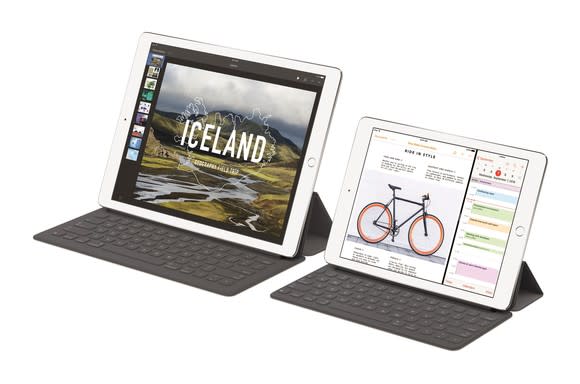Why the Apple Inc. iPad Mini Has No Future
In 2012, Apple (NASDAQ: AAPL) introduced the iPad Mini, likely in an attempt to fend off the swarm of Android-based tablets that came with screens measuring between 7 and 8 inches along the diagonal. The product category was successful for a brief time, but over the last several years, small-screen tablets have fallen out of favor with consumers as smartphone screens have gotten bigger.
As of today, Apple still updates its large-screen iPad and iPad Pro product families at a regular clip, something that makes sense considering that Apple management has indicated that sales of its large-screen iPad models are growing, even in a relatively weak tablet market.

Image source: Apple.
On the other hand, Apple hasn't updated the iPad Mini since the introduction of the iPad mini 4 in September 2015.
At this point, I think it's safe to say that the iPad mini product category is, for all intents and purposes, finished. Here's why.
Nearing three years without an update
It's been 2.5 years since Apple updated the iPad Mini. Typically, major computer vendors (tablets and smartphones count as computers) update their product lines each year in a bid to improve the value propositions of said products -- more features and performance are ultimately supposed to provide the customer a better value, thereby encouraging purchases.
The fact that Apple hasn't upgraded the iPad Mini 4 in all this time, even though upgrading the current device annually would be a fairly trivial exercise for Apple's product development teams (almost no new technology needs to be developed for it), tells us that the iPad Mini product category is so inconsequential to Apple's financial performance that it's not worth the effort to update it.
Moreover, Apple isn't a poor company nor does it shy away from investing significantly in areas that it expects will drive growth -- something that Apple's ballooning research and development budget clearly indicates.
If Apple cared enough about the iPad Mini product line, it would have a team dedicated to regularly updating it with new processors, memory, and other internal component changes.
The future of the iPad Mini
At this point, it seems clear that the iPad Mini product line doesn't have much of a future. The company currently sells a two versions of the iPad Mini 4 -- a Wi-Fi-only variant with 128 GB of storage for a whopping $399 and an LTE version of that device for $529.
My guess is that Apple will continue selling the iPad mini 4 until Apple stops supporting devices powered by the A8 processor (the chip that powers the iPad Mini 4) in new releases of its iOS operating system.
The current version of iOS, known as iOS 11, supports devices with A7 processors and newer, so I wouldn't be surprised if Apple continues selling the current iPad Mini for a few more years.
Over those few years, I expect sales of the iPad Mini 4 to continue to decline (something that should be helped along by a lack of price cuts on the device) until demand is nearly nonexistent. At that point, Apple would likely dump all remaining inventory for fire sale prices and ultimately discontinue the iPad Mini product category altogether.
More From The Motley Fool
Ashraf Eassa has no position in any of the stocks mentioned. The Motley Fool owns shares of and recommends Apple. The Motley Fool has the following options: long January 2020 $150 calls on Apple and short January 2020 $155 calls on Apple. The Motley Fool has a disclosure policy.
